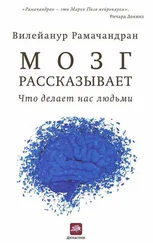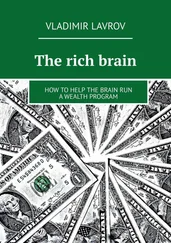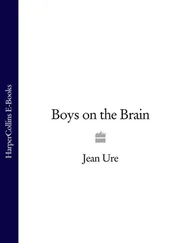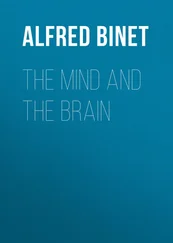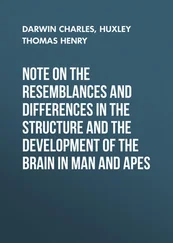In a science still in its infancy (like neuroscience and psychology) demonstration-style experiments play an especially important role. A classic example is Galileo’s use of early telescopes. People often assume that Galileo invented the telescope, but he did not. Around 1607, a Dutch spectacle maker, Hans Lipperhey, placed two lenses in a cardboard tube and found that this arrangement made distant objects appear closer. The device was widely used as a child’s toy and soon found its way into country fairs throughout Europe, including France. In 1609, when Galileo heard about this gadget, he immediately recognized its potential. Instead of spying on people and other terrestrial objects, he simply raised the tube to the sky — something that nobody else had done. First he aimed it at the moon and found that it was covered with craters, gullies and mountains — which told him that the so-called heavenly bodies are, contrary to conventional wisdom, not so perfect after all: They are full of flaws and imperfections, open to scrutiny by mortal eyes just like objects on earth. Next he directed the telescope at the Milky Way and noticed instantly that far from being a homogeneous cloud (as people believed), it was composed of millions of stars. But his most startling discovery occurred when he peered at Jupiter, which was known to be a planet or wandering star. Imagine his astonishment when he saw three tiny dots near Jupiter (which he initially assumed were new stars) and witnessed that after a few days one disappeared. He then waited for a few more days and gazed once again at Jupiter, only to find that not only had the missing dot reappeared, but there was now an extra dot — a total of four dots instead of three. He understood in a flash that the four dots were Jovian satellites — moons just like ours — that orbited the planet. The implications were immense. In one stroke, Galileo had proved that not all celestial bodies orbit the earth, for here were four that orbited another planet, Jupiter. He thereby dethroned the geocentric theory of the universe, replacing it with the Copernican view that the sun, not the earth, was at the center of the known universe. The clinching evidence came when he directed his telescope at Venus and found that it looked like a crescent moon going though all the phases, just like our moon, except that it took a year rather than a month to do so. Again, Galileo deduced from this that all the planets were orbiting the sun and that Venus was interposed between the earth and the sun. All this from a simple cardboard tube with two lenses. No equations, no graphs, no quantitative measurements: “just” a demonstration.
When I relate this example to medical students, the usual reaction is, Well, that was easy during Galileo’s time, but surely now in the twentieth century all the major discoveries have already been made and we can’t do any new research without expensive equipment and detailed quantitative methods. Rubbish! Even now amazing discoveries are staring at you all the time, right under your nose. The difficulty lies in realizing this.
For example, in recent decades all medical students were taught that ulcers are caused by stress, which leads to excessive acid production that erodes the mucosal lining of the stomach and duodenum, producing the characteristic craters or wounds that we call ulcers. And for decades the treatment was either antacids, histamine receptor blockers, vagotomy (cutting the acid-secreting nerve that innervates the stomach) or even gastrectomy (removal of part of the stomach). But then a young resident physician in Australia, Dr. Bill Marshall, looked at a stained section of a human ulcer under a microscope and noticed that it was teeming with Helicobacter pylori — a common bacterium that is found in a certain proportion of healthy individuals.
Since he regularly saw these bacteria in ulcers, he started wondering whether perhaps they actually caused ulcers. When he mentioned this idea to his professors, he was told, “No way. That can’t be true. We all know ulcers are caused by stress. What you are seeing is just a secondary infection of an ulcer that was already in place.”
But Dr. Marshall was not dissuaded and proceeded to challenge the conventional wisdom. First he carried out an epidemiological study, which showed a strong correlation between the distribution of Helicobacter species in patients and the incidence of duodenal ulcers. But this finding did not convince his colleagues, so out of sheer desperation, Marshall swallowed a culture of the bacteria, did an endoscopy on himself a few weeks later and demonstrated that his gastrointestinal tract was studded with ulcers! He then conducted a formal clinical trial and showed that ulcer patients who were treated with a combination of antibiotics, bismuth and metronidazole (Flagyl, a bactericide) recovered at a much higher rate — and had fewer relapses — than did a control group given acid-blocking agents alone.
I mention this episode to emphasize that a single medical student or resident whose mind is open to new ideas and who works without sophisticated equipment can revolutionize the practice of medicine. It is in this spirit that we should all undertake our work, because one never knows what nature is hiding.
I’d also like to say a word about speculation, a term that has acquired a pejorative connotation among some scientists. Describing someone’s idea as “mere speculation” is often considered insulting. This is unfortunate.
As the English biologist Peter Medawar has noted, “An imaginative conception of what might be true is the starting point of all great discoveries in science.” Ironically, this is sometimes true even when the speculation turns out to be wrong. Listen to Charles Darwin: “False facts are highly injurious to the progress of science for they often endure long; but false hypotheses do little harm, as everyone takes a salutary pleasure in proving their falseness; and when this is done, one path toward error is closed and the road to truth is often at the same time opened”.
Every scientist knows that the best research emerges from a dialectic between speculation and healthy skepticism. Ideally the two should coexist in the same brain, but they don’t have to. Since there are people who represent both extremes, all ideas eventually get tested ruthlessly. Many are rejected (like cold fusion) and others promise to turn our views topsy turvy (like the view that ulcers are caused by bacteria).
Several of the findings you are going to read about began as hunches and were later confirmed by other groups (the chapters on phantom limbs, neglect syndrome, blindsight and Capgras’ syndrome). Other chapters describe work at an earlier stage, much of which is frankly speculative (the chapter on denial and temporal lobe epilepsy). Indeed, I will take you at times to the very limits of scientific inquiry.
I strongly believe, however, that it is always the writer’s responsibility to spell out clearly when he is speculating and when his conclusions are clearly warranted by his observations. I’ve made every effort to preserve this distinction throughout the book, often adding qualifications, disclaimers and caveats in the text and especially in the notes. In striking this balance between fact and fancy, I hope to stimulate your intellectual curiosity and to widen your horizons, rather than to provide you with hard and fast answers to the questions raised.
The famous saying “May you live in interesting times” has a special meaning now for those of us who study the brain and human behavior. On the one hand, despite two hundred years of research, the most basic questions about the human mind — How do we recognize faces? Why do we cry? Why do we laugh? Why do we dream? and Why do we enjoy music and art? — remain unanswered, as does the really big question: What is consciousness? On the other hand, the advent of novel experimental approaches and imaging techniques is sure to transform our understanding of the human brain. What a unique privilege it will be for our generation — and our children’s — to witness what I believe will be the greatest revolution in the history of the human race: understanding ourselves. The prospect of doing so is at once both exhilarating and disquieting.
Читать дальше


